Reolink Argus 2E Review
The first-generation Argus 2 security camera gets a face-lift with a sleeker, glossier finish.

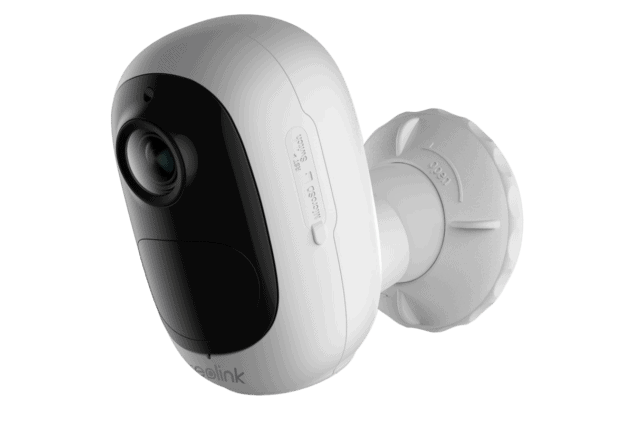
SafeHome.org may receive compensation from some providers listed on this page. Learn More
We may receive compensation from some providers listed on this page. Learn More
The first-generation Argus 2 security camera gets a face-lift with a sleeker, glossier finish.


Editor’s Note: Cameras are an excellent security solution. However, we recommend getting a home security system from a company like ADT or SimpliSafe for complete peace of mind. Check out our list of the best home security systems.
If you’re looking for an affordable, no-frills security solution, Reolink has options. They offer straightforward, easy-to-use cameras that gain our respect through their quality and flexibility. While they continue to evolve in terms of technology and features, they’re still sticking to their values of providing security-minded folks with simple cameras that just get the job done.
I’ve put a lot of Reolink’s cameras through their paces, and I most recently spent some time working with the Reolink Argus 2E. Here we’re going to take a look at the ins and outs of this camera, and see if it’s worth your time and money.
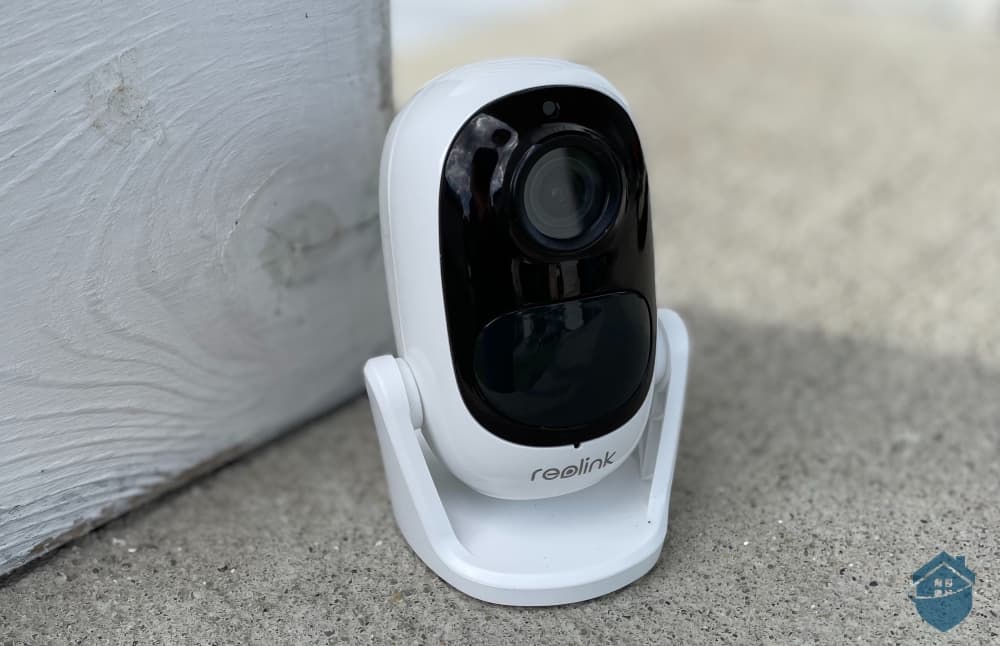
Reolink Argus 2E displayed on the front porch
Let’s start by talking about what you’re getting. This weatherproof camera is a sleek, slightly less expensive take on the company’s original Argus 2. That camera was well designed and easy to use, and I’m happy to say I had about the same experience with its younger brother.
With that in mind, I was excited to see how the 2E would stack up against the competition and previous iterations of the camera itself. I knew it was almost identical to the Argus 2, but would there be any significant improvements? Would it hold up better, or would the picture quality be improved? We’re going to answer all of those questions — and quite a few more — but first, let’s look at the pros and cons.
Pro Tip: While the Argus 2E is a fine camera, it’s not the most recent iteration. Reolink is offering the Argus 3 Pro for $104.99. It has more advanced features than its brother here, including smart detections and color night vision.
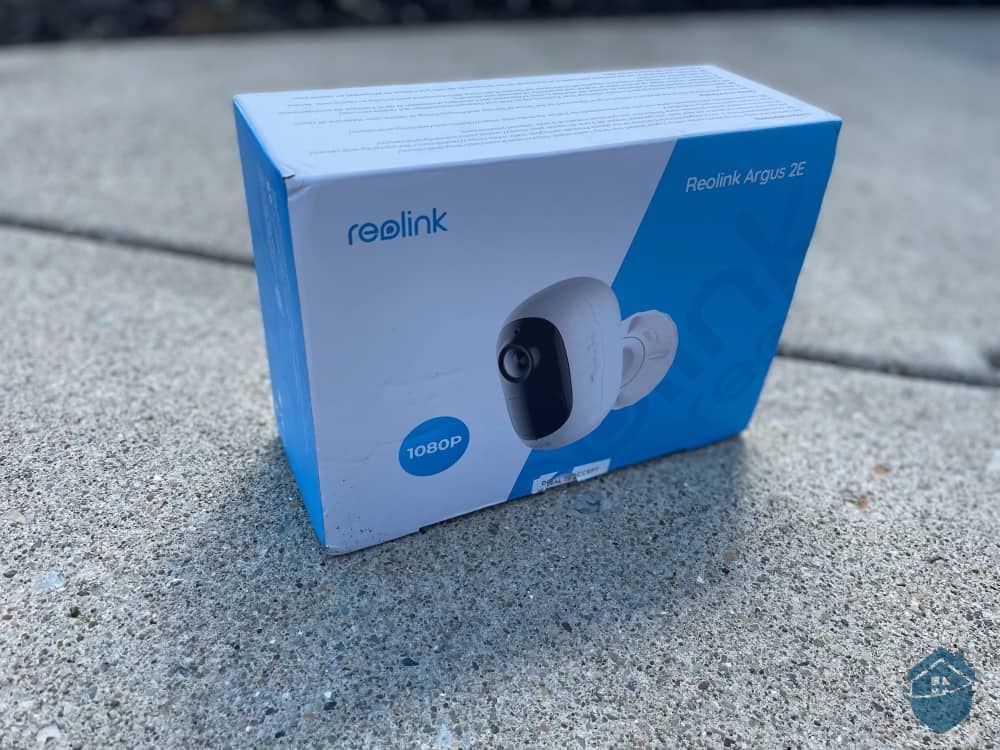
Reolink Argus 2E Box
Right away, the resemblances between Reolink Argus 2E and its predecessor, Argus 2, were obvious. Both maintain a simple, rounded design. Both allow for wall or surface mounting, with easy-to-attach brackets included in the box for easy, quick installation. And both are offered at affordable prices – the Argus 2 was $68 in its heyday, and the 2E is currently retailing for $74.99 on the Reolink site.
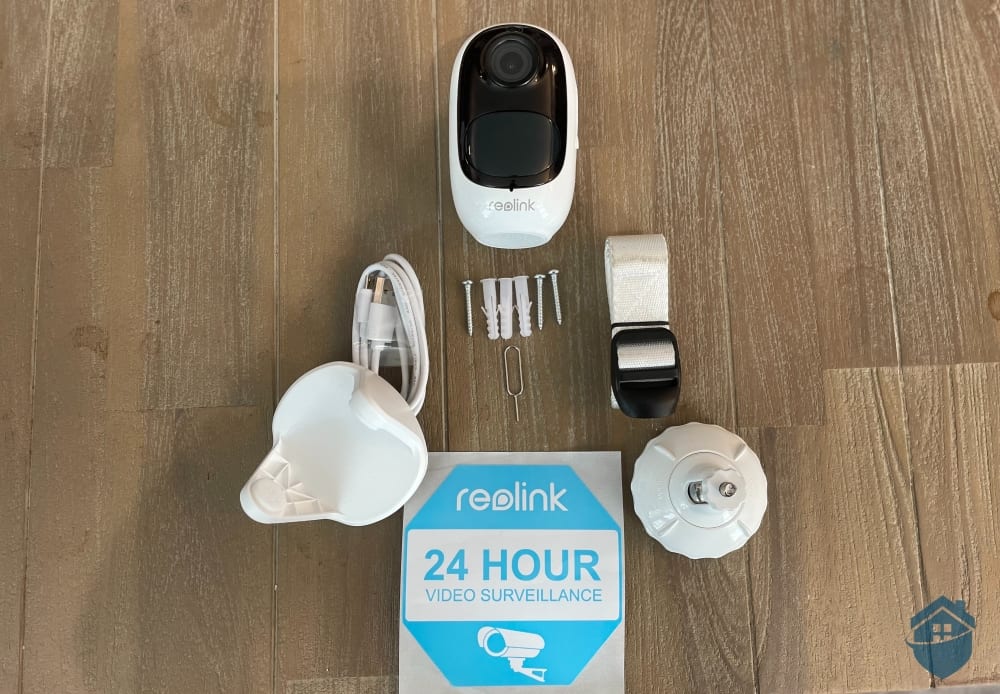
Reolink Argus 2E Equipment
When it comes to prices, we were a little concerned that the 2E was more expensive than it’s predecessor, especially when you consider that the accessories you’re provided with are significantly slimmed down and the battery pack is not removable. The Argus 2 came with two mounting options, as well, and the 2E only provides one. What can we say, though. Inflation comes for everyone.
Held up side by side, however, the resemblances are quite evident, as you can see in the photo below:
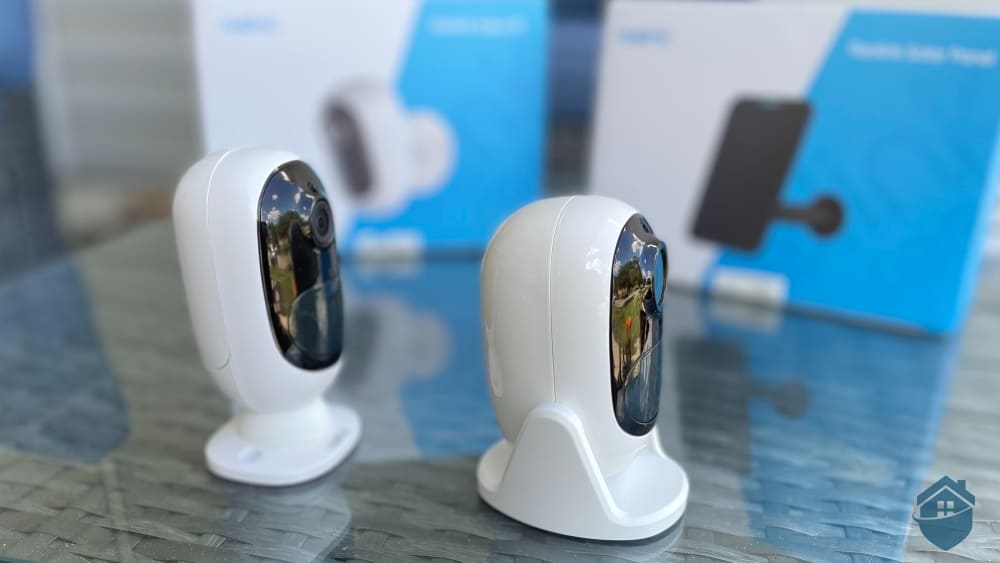
Reolink Argus 2 from left side by side next to Argus 2E
What you’re really looking at with Argus 2E is a slightly cheaper, simpler version of the Argus 2. It does have a glossier finish, which makes it look a bit sleeker and more reminiscent of the Arlo cameras I tested not long ago (read more on that in my full Arlo camera review). Those cameras, you might recall, are quite a bit pricier than Reolink – about $20 to $30 more depending on the model – but definitely worth considering, as Arlo cameras are among the best in the biz.
So as far as first impressions go, things look pretty straightforward.
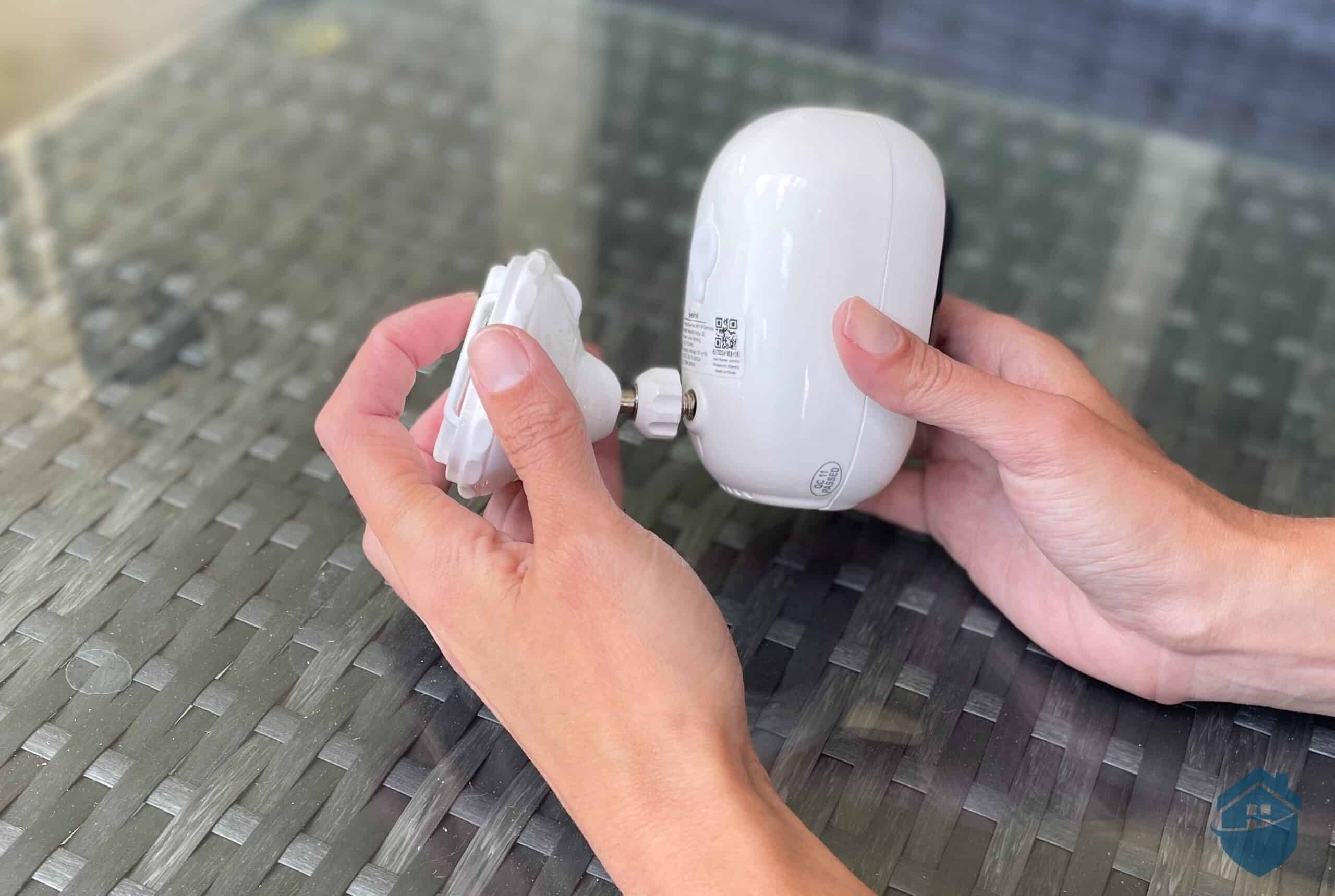
Reolink Argus 2E – Installing bracket to camera
Moving further into installation and setup, you’re looking at essentially the same process bringing the 2E online as you’d have with Reolink’s other Argus-label cameras: the Argus 3, Argus 3 Pro and Argus Eco.
With 2E, however, you have only a simple ball joint bracket for wall mounting, plus a swivel stand that gives the camera a tight hug for simple surface displays. It’s a bit more restrictive than its predecessor, but nothing too disappointing in the long run.
Similar to my previous experiences with the Reolink Argus Eco, the set up and synching process for the 2E involves little more than using your phone to scan a QR code on the back of the camera, telling it your Wi-Fi information, giving it a name, and letting the firmware update. When all is said and done, it only took us about 10 minutes to get it out of the box and up and running.
Pro Tip: For the Argus 2E and the rest of the Reolink cameras, it’s best to allow yourself at least 10 to 15 minutes (from unboxing to setup) to get everything up and running properly. The tech works fast, but some trip-ups and slowdowns are to be expected.
Of course, the newest, hottest trend in security cameras is solar panels, and Reolink has those, too. You can connect a Reolink solar panel, in either black or white finish, to a Reolink camera for free and continuous power. So, there are lots of ways to save here.
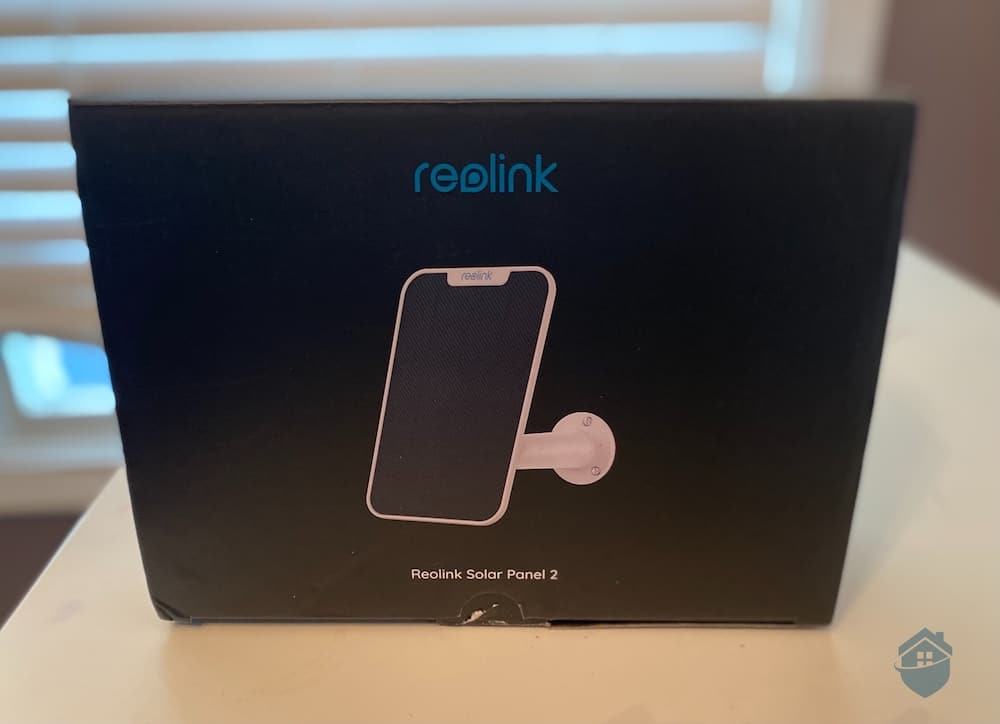
Reolink Solar Panel Packaging
Since the Argus 2E is a pretty standard camera, I did set my expectations accordingly. I wasn’t expecting such advanced features like automatic motion tracking like I saw in the game-changing Google Nest Cams I tested.
While those advanced features are all pretty great, I wanted to compare apples to apples with the 2E. I started by asking the fundamental question of all security cameras — what can this camera do to protect my family and my property?
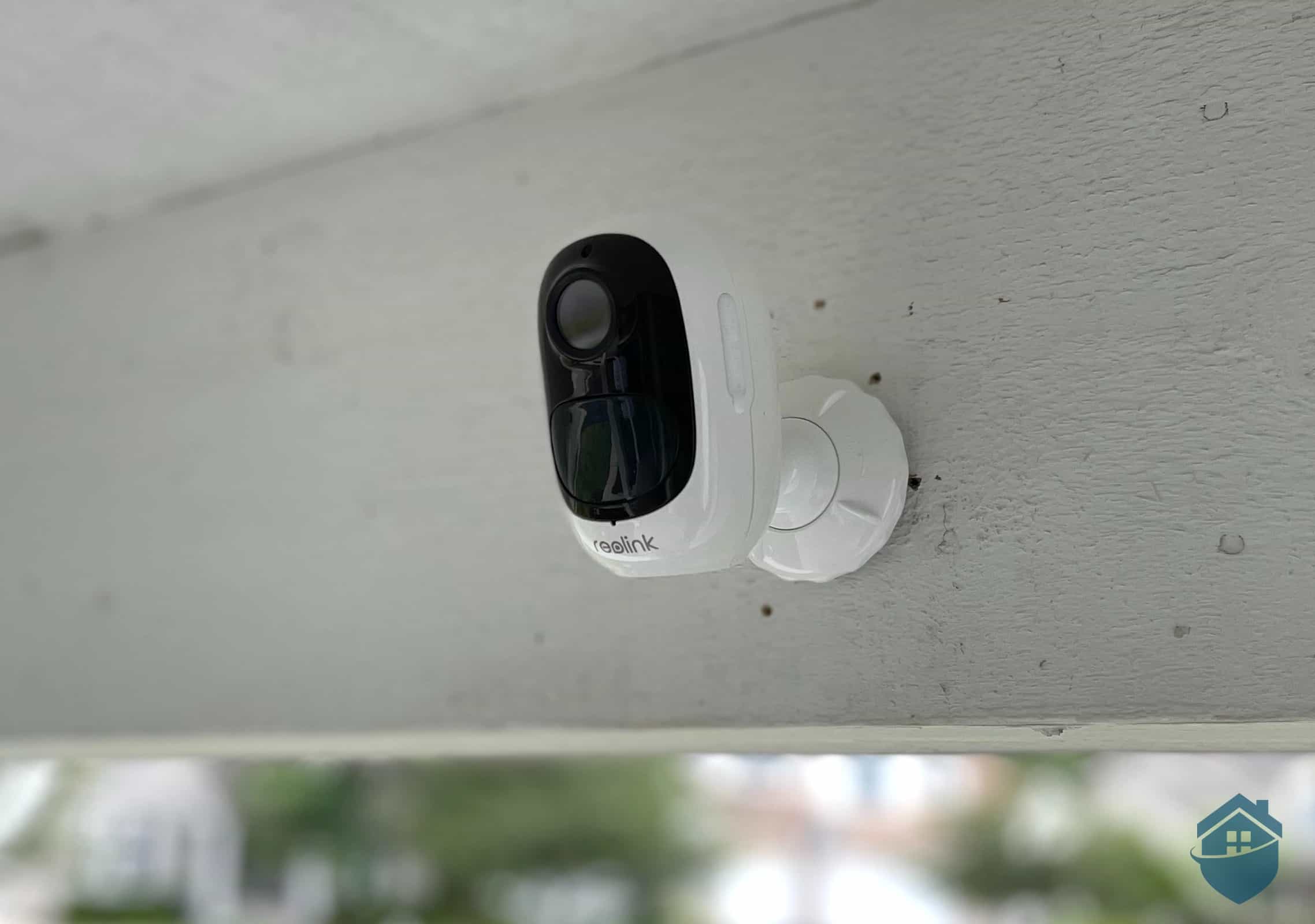
Reolink Argus 2E installed above front porch
Just like the Argus 2, the Reolink Argus 2E is IP65-certified for weatherproofing. It’s also wire-free, with a built-in rechargeable battery, so you can install the camera where cords and outlets can’t reach.
As far as handling the elements, I’ve tested several Reolink cameras and have never experienced weather damage with any of them. Just something to keep in mind.
Did You Know? PIR Motion Sensing, a feature in both the Argus 2 and Argus 2E cameras, detects motion using “heat signatures.” Though it doesn’t work 100 percent of the time, it does a good job reducing false or unnecessary alerts, like bugs or cobwebs, so you can focus on motion that matters.
In terms of the Argus 2E’s video recordings, Reolink’s 1080p HD video and image quality easily triumphed over less expensive (but still excellent) brands like Amazon-owned Blink. (Check out my full Blink camera review for some really nice budget-friendly options, and learn more about pricing and packages for Blink.)
Aside from occasional video lags and delays, you should still get some high-quality footage from the Argus 2E. Among the many advantages of having a camera like this is that you can keep tabs on the little ones in the house – which includes both the two-legged and four-legged variety.
This is what Reolink cameras are best at, and the 2E is no different: You’re getting simple, convenient insight into the happenings in and around your home. If you’re wondering about video quality in the clip above, you’ll probably note that it’s surely not the clearest picture you’ve ever seen in a camera. This is just the way wireless cameras operate, and for me, the recordings on the 2E still provided plenty of detail and very few lags during playback. But it’s also a camera that depends solely on Wi-Fi to record video, so patience is always advised.
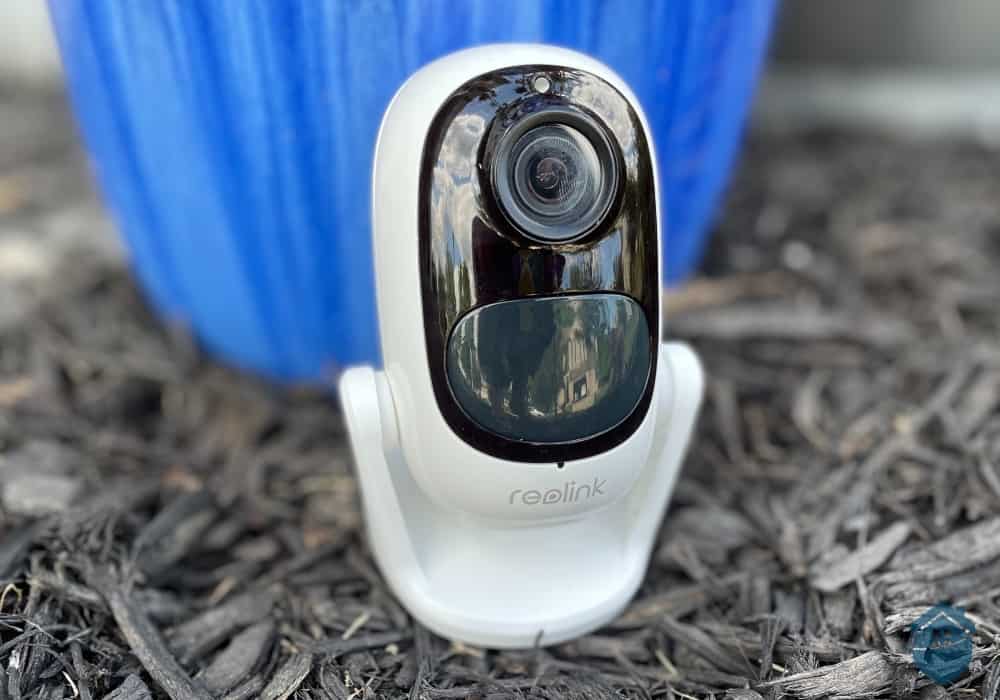
Reolink Argus 2E displayed in front of a flower pot
Compared to the best motion sensor cameras in the market, Reolink does come up a bit short. The Argus 2E has PIR (passive infrared) motion sensing,1 which is pretty common among cameras at this price point; it basically detects motion by responding to body heat, so it can tell living from non-living objects. This is pretty effective as a motion detection feature, and it does go a long way toward parsing out false or unnecessary alerts, like leaves blowing in the wind.
Here’s what a typical video clip from the Argus 2E looks like:
But, the camera doesn’t distinguish between objects (person, vehicle or animal). Again, this is pretty standard, especially in cameras that fall in this price range. Cameras with person detection, which is a healthy notch over PIR sensing, are becoming more common. The differences between person detection and PIR motion sensing aren’t enormous, but with person detection, you’ll be able to contextualize the activity before even seeing it.
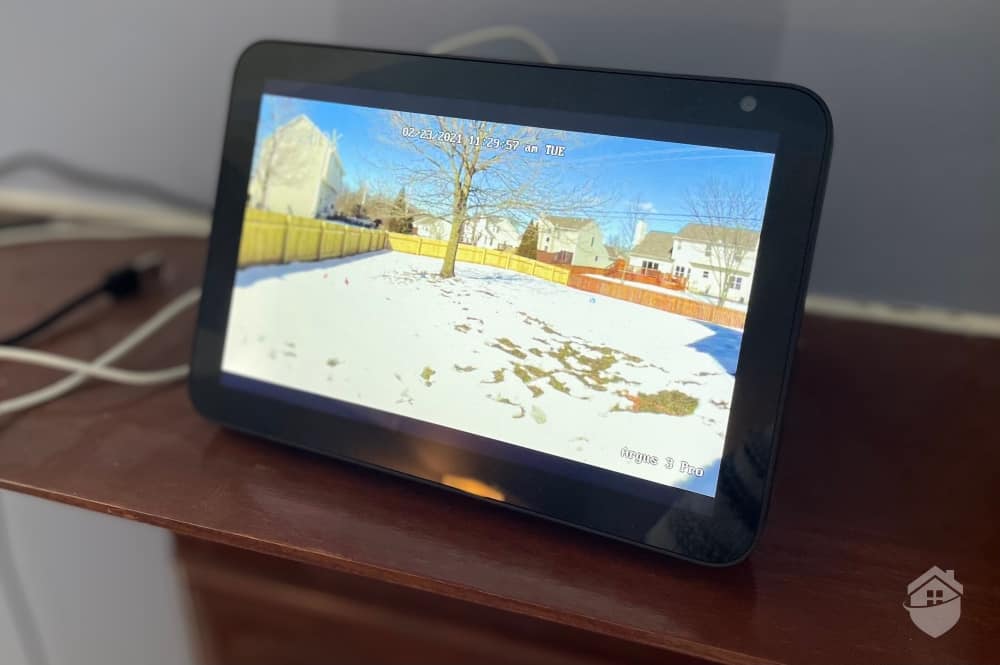
Reolink Argus 3 Pro on Alexa
Inside the Reolink app’s settings, you can use the smart home tab to pair your Reolink Argus 2E camera to your Amazon Echo Show, Google Home2 Mini, or other smart home setup. This works exactly the same way as the Argus 3. You can learn more about that sleek, wire-free device with a powerful spotlight in my Reolink Argus 3 review.
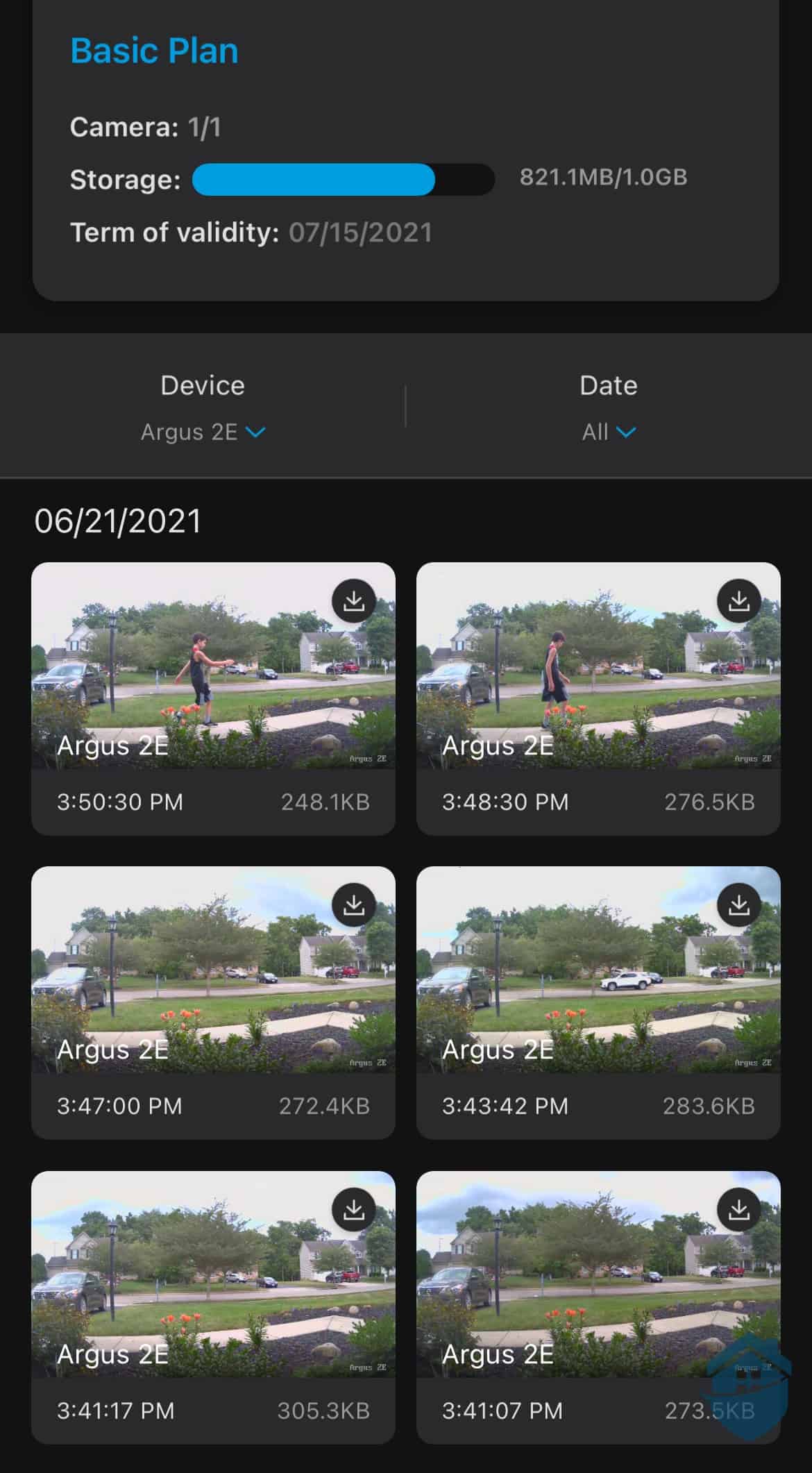
Reolink Argus 2E App
FYI: Some folks might feel limited by Reolink’s laser focus on cameras. You won’t find much in the way of sensors or fully monitored systems here. If you are looking for a whole-home system, though, the SimpliSafe DIY system we reviewed makes a nice alternative. Just another thing to keep in mind.
We’re going to talk about pricing below, but before we do that let’s take a look at how the Reolink 2E stacks up against some of its big-name competitors.
| Camera | Reolink Argus 2E | Google Nest Cam | Arlo Pro 5S |
|---|---|---|---|
| Resolution | 1080p | 1080p | 2k |
| Power Source | Battery or Solar | Battery or Solar | Battery or Solar |
| Smart Alerts | Yes | Yes | Yes |
| Facial Recognition | No | Yes | No |
| Field of View | 120 Degrees | 130 Degrees | 160 Degrees |
| Retail Cost | $94.99 | $179.99 | $249.99 |
As you might have learned in my overall Reolink camera review, this brand has a pretty vast selection of cameras. You can “kit out” a pretty big space with one of Reolink’s multi-camera NVR-based systems, or you can pick up a simple add-on device like the panning, tilting, dome-shaped Reolink PoE Security IP Camera with up to 100-foot night vision. The choices here are numerous, and that’s definitely an advantage with Reolink.
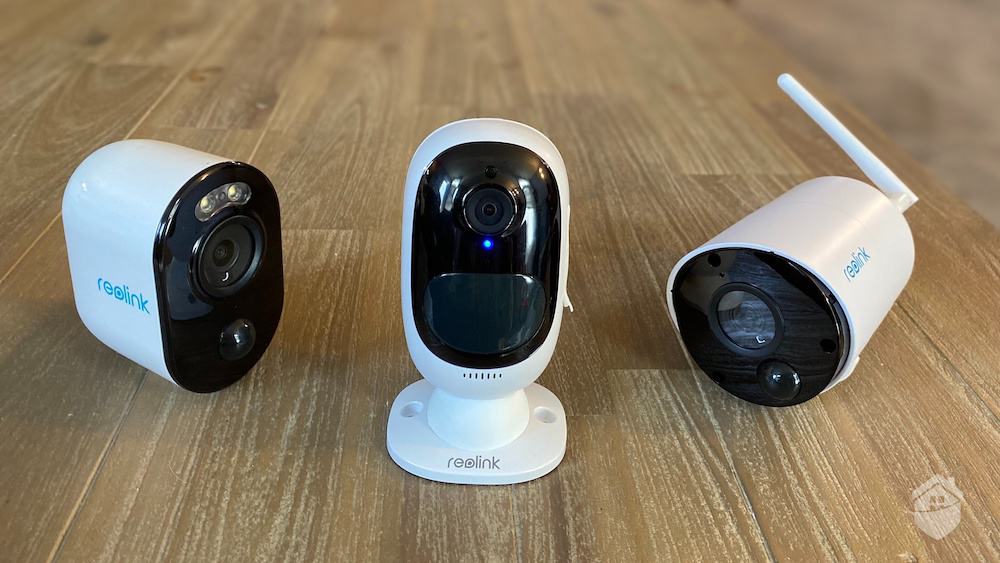
Reolink Argus 3, Argus 2, and Argus Eco (from left)
As far as pricing, Reolink cameras range from about $65 up to $599 for a multi-camera NVR system. You can learn much more about Reolink’s cameras and pricing here, but for now, here’s a quick snapshot of current equipment costs.
| Reolink Camera | Camera Type | Key Features | Price |
|---|---|---|---|
| Argus 3 Pro | Outdoor |
|
$104.99 |
| Argus 2E | Outdoor |
|
$74.99 |
| Argus PT | Pan/Tilt |
|
$135.99 |
| Argus Eco | Outdoor |
|
$72.99 |
As you can see, these cameras are pretty affordable. If you’re looking to stretch your dollar even further, though, we have some good news. Select Reolink camera models are on sale right now. Here’s the breakdown:
| Reolink Camera | Original Price | Sale Price |
|---|---|---|
| Reolink TrackMix POE | $189.99 | $159.99 |
| Reolink Floodlight | $64.99 | $54.99 |
| FE-W Fisheye Camera | $136.99 | $116.44 |
| Reolink Video Doorbell POE | $99.99 | $84.99 |
The Reolink Argus 2E provides the same reliable video storage as the rest of the cameras in Reolink’s Argus series. These cameras are meant for self-monitoring, and they produce motion clips rather than record continuous footage.3 That’s one thing to remember if you’re planning to buy a Reolink camera: Many of them give you the option to store your recordings via your own micro SD card, as shown in the app screengrab below; or you can choose to save and store the footage in the cloud.
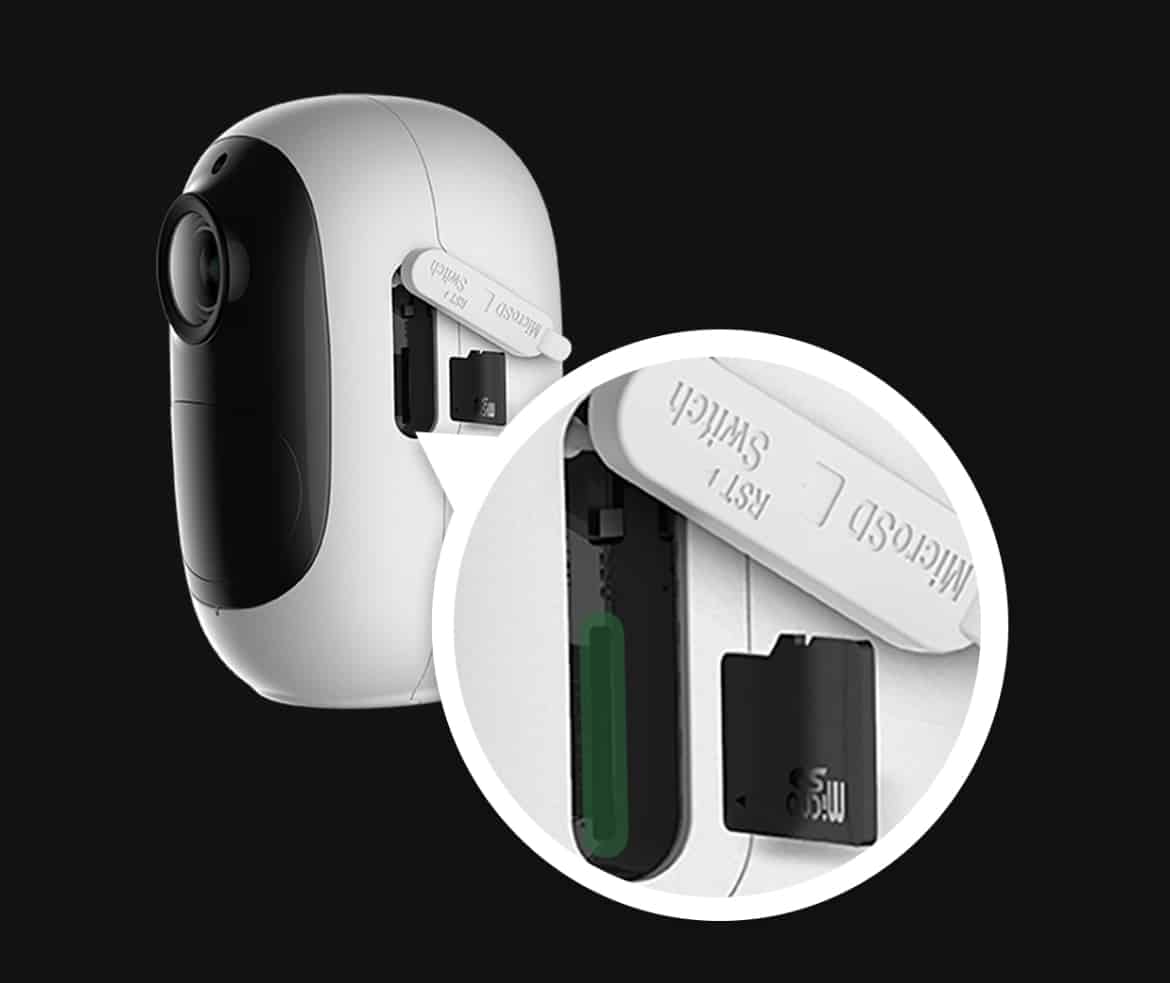
Close-up of Reolink 2E MicroSD and power switch
Speaking of savings, with Reolink, you can also get 30 days of storage for up to five cameras for only $6.99 per month for the standard plan. That, in all honesty, is one of the best deals out there right now on cloud video storage. It’s right around the same price you’d pay to store videos with the Ring Spotlight camera I tested.
It’s also worth mentioning that Reolink’s app makes it easy to toggle between device playback (where you’ll see your recordings from your micro SD card) and cloud storage. Both tabs are easily accessible in the app, right along with the smart home tab that enables easy access to Alexa, Google Assistant or a Chromecast-enabled device.
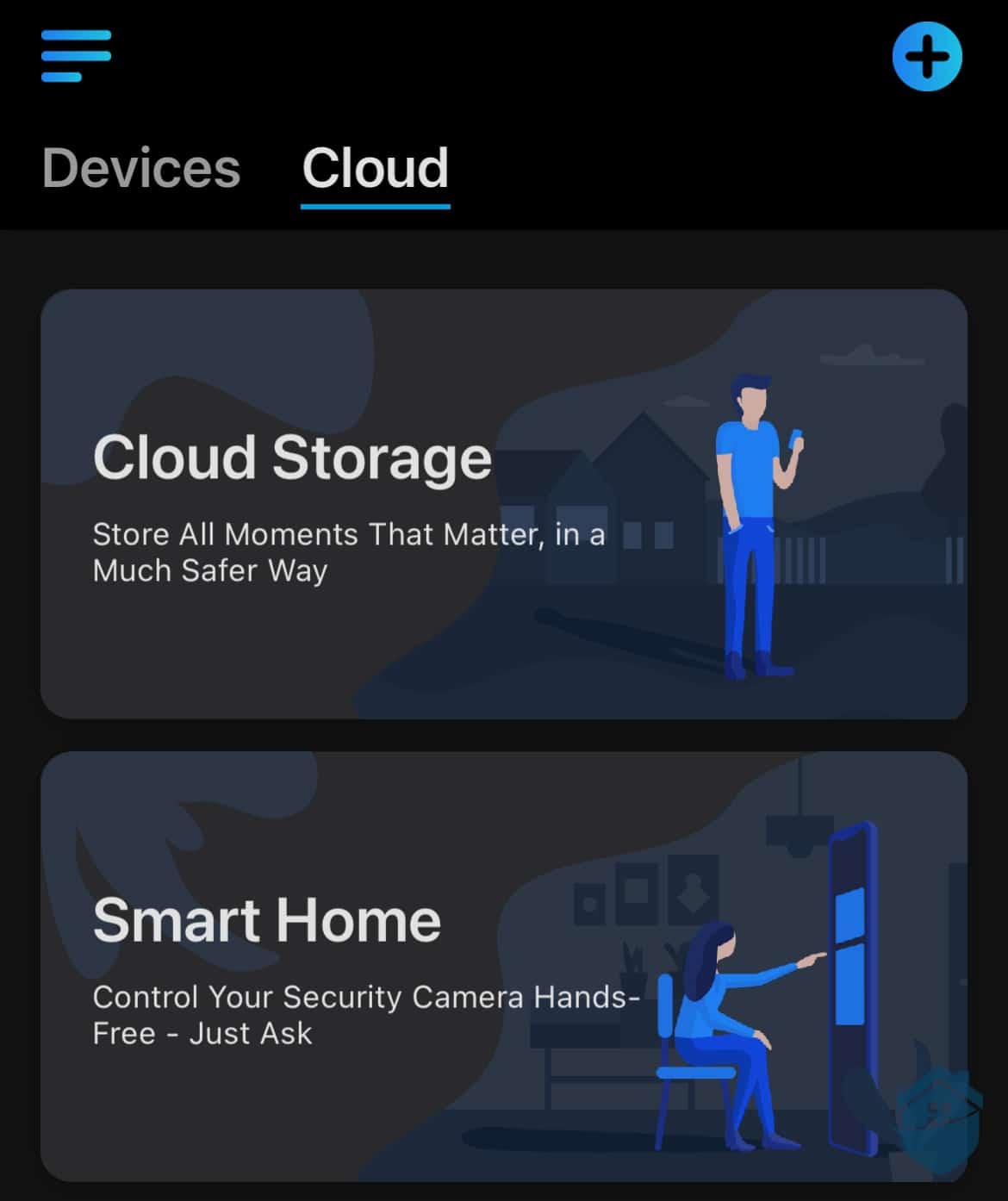
Reolink Argus 2E cloud storage and smart home tabs in app
And don’t forget that Reolink also has a free cloud option. If you’re more of a cord-cutting type of homeowner, or you’re just tired of paying monthly fees (and aren’t we all, really?), you can still save up to seven days of recording per camera at no extra charge. This appeals to folks on a budget, as well as apartment dwellers and renters.
| Plan Name | Standard | Premier Plan | Business Plan |
|---|---|---|---|
| Price | $6.99 per month | $10.99 per month | $15.99 per month |
| Cameras Supported | 5 | 10 | 20 |
| Cloud Storage | 30GB | 80GB | 150GB |
| Rich Notifications | Yes | Yes | Yes |
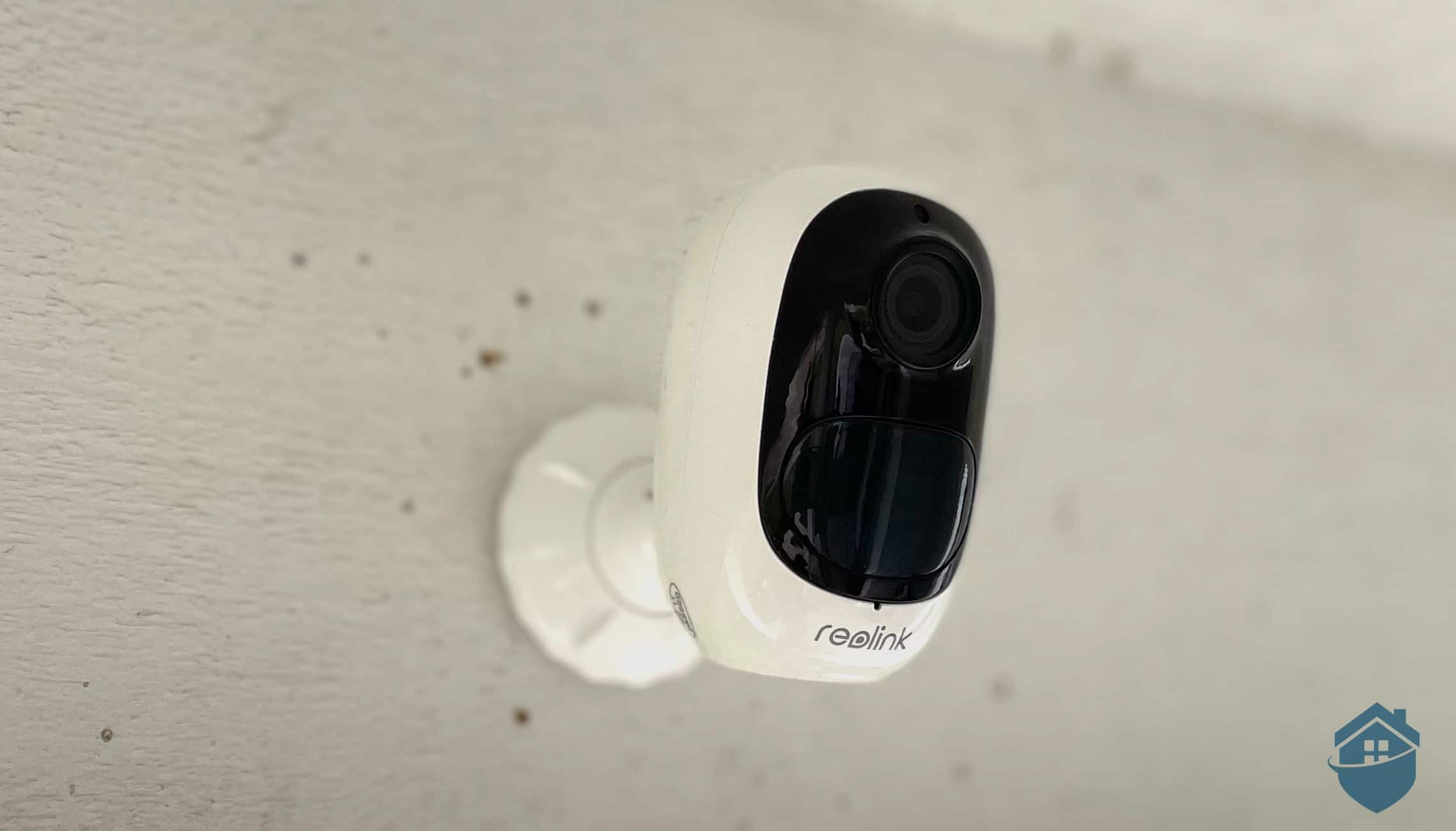
Reolink Argus 2E above front porch
A Reolink camera does a nice job delivering the essentials of home security. That’s been established throughout most of Reolink’s devices, from wireless cameras like the Argus 2E to larger whole-home NVR setups.
While the Argus 2E isn’t going to blow you away with its list of high-tech features or crystal clear recording in 8K capable of being blown up to IMAX size, I still think you’re going to be happy with this little workhorse of a camera. It does what it does well, and that’s keeping an eye on your family and your property. If you’re looking for a camera to get that job done, you can’t really go wrong.
For the most part, yes. You’re not going to spend a fortune on a Reolink camera. They usually run from about $59 to $209, depending on features, installation types, and the level of protection you need.
No. Reolink has a free option that saves seven days’ worth of video history per camera. Which means no contracts, no monthly fee and no fuss. And, if you’d rather avoid the cloud altogether, you can insert a micro SD card into the provided slot on the Reolink Argus 2E.
Yes. By linking your Reolink camera with Alexa, you can incorporate your cameras into any Amazon smart home ecosystem. Using your voice, you can pull up your live feed to check out the scene.
Fair to good. It’s not the quality and detail you’ll get from an Arlo camera, for instance, so it was hard to decipher dark-colored or faraway objects at night.
Yes. The camera is wire-free and runs on rechargeable batteries, but it still has a USB port on the body of the camera; plus a power cord is included in the box. You can use it to charge the camera, or you can plug it in for continuous power.
Yes, the camera is designed to be IP-65 weatherproof. Its housing will protect the camera from water, dust and wind.
Cook, Jeremy. (2018, Sept 11). The Right Tool for the Job: Active and Passive Infrared Sensors. Arrow.
https://www.arrow.com/en/research-and-events/articles/understanding-active-and-passive-infrared-sensors
PR Newswire. (2019, June 20). Reolink Works With Google Assistant, Spearheading a New Era of Connected and Smart Home.
https://www.prnewswire.com/news-releases/reolink-works-with-google-assistant-spearheading-a-new-era-of-connected-and-smart-home-300871855.html
CorportateHousingbyOwner.com. (2019, May 13). Motion-Activated Security vs. Continuous Recording: Factors to Consider.
https://www.corporatehousingbyowner.com/blog/2019/05/motion-activated-security-vs-continuous-recording-factors-to-consider/